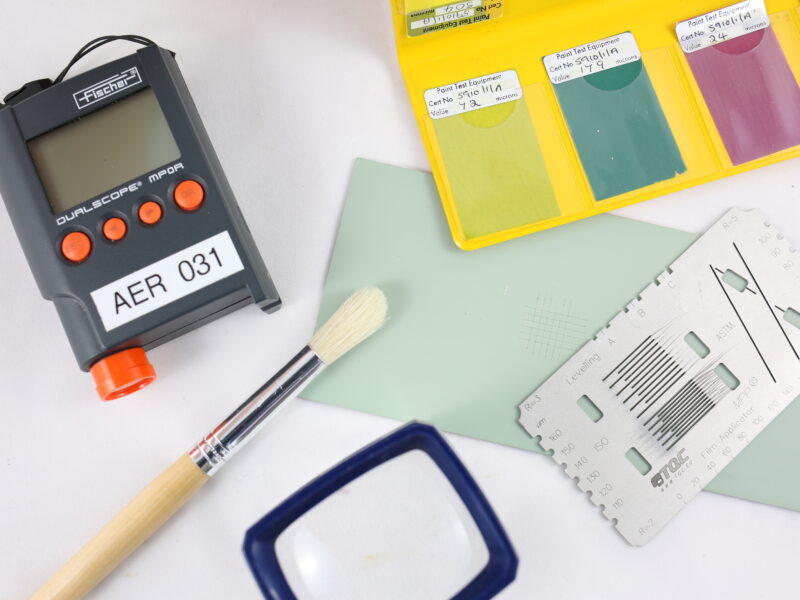Paint testing
The terms “paints” and “coatings” often mean the same thing. Most commonly paints are considered to be used primarily for aesthetics, while coatings are used principally to prevent substrate deterioration, or for corrosion protection. Industrial coatings are most commonly used for corrosion protection of metal substrates in structures.
Regardless of its primary function, the coating or paint must have adequate performance capabilities for its intended purpose. In order to assess performance, paints and coatings go through testing as both; the finished article and pre-application (wet state).
Adhesion Testing
Adhesion testing evaluates a coatings properties or coating systems ability to adhere to a substrate. These can be performed to evaluate capability to apply paint or to qualify a new coatings performance.
Qualitative and quantitative tests are available for evaluating the adhesion of organic and inorganic coatings on various substrates. Methods include: Pull off testing, Bend, Burnishing, Chisel-Knife, File, Grind-Saw, Heat-Quench, Impact, Peel and Scribe-Grid-Tape testing.
Many adhesion methods require conditioning or exposure to a specific environment prior to test. Aerofin Laboratories have the facilities to subject test pieces to the following conditions; humidity, temperature, immersion and corrosion salt spray, to name a few.
- Test Methods include:
- ASTM B 571
- ASTM D 3359
- ASTM D 2794
- ISO 2409
- Federal Test Method 6301.3
- BSS 7225
- ISO 4624
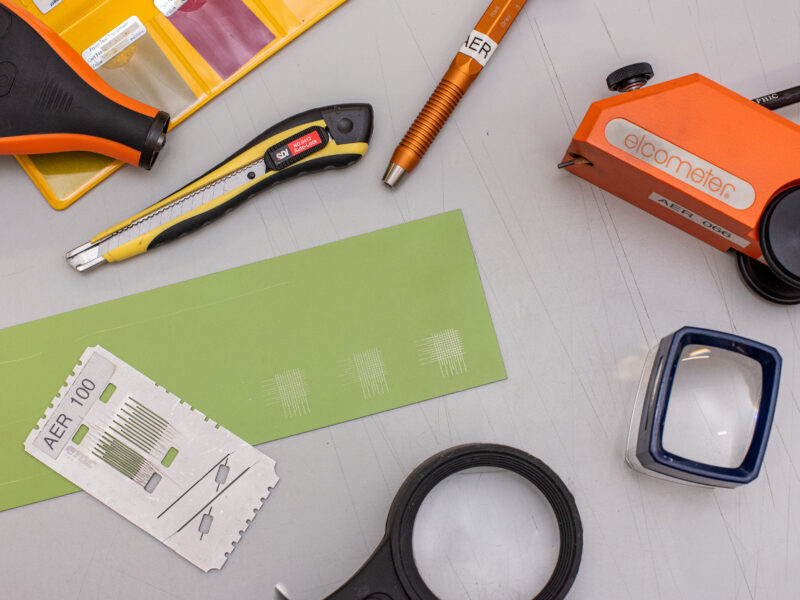
Fluid Resistance Testing
Fluid resistance tests assess a surface’s ability to resist attack or deformation from fluids it may encounter in service. Examples of fluid resistance testing conducted by Aerofin include water, fuel & Skydrol Aviation hydraulic fluid.
Fluid resistance testing can be conducted as a stand alone test with after exposure analysis for blisters, rusting, cracks, swelling, peeling and other morphologies. Alternatively, as a pre-conditioning phase, prior to further testing such as paint adhesion, scratch hardness, colour and gloss analysis.
- Test Methods Include:
- ISO 2812-1
- ISO 2812-2
- ISO 2812-3
- ISO 4586-2
- ASTM D1735
- MIL-PRF-85582
- MIL-PRF-23377
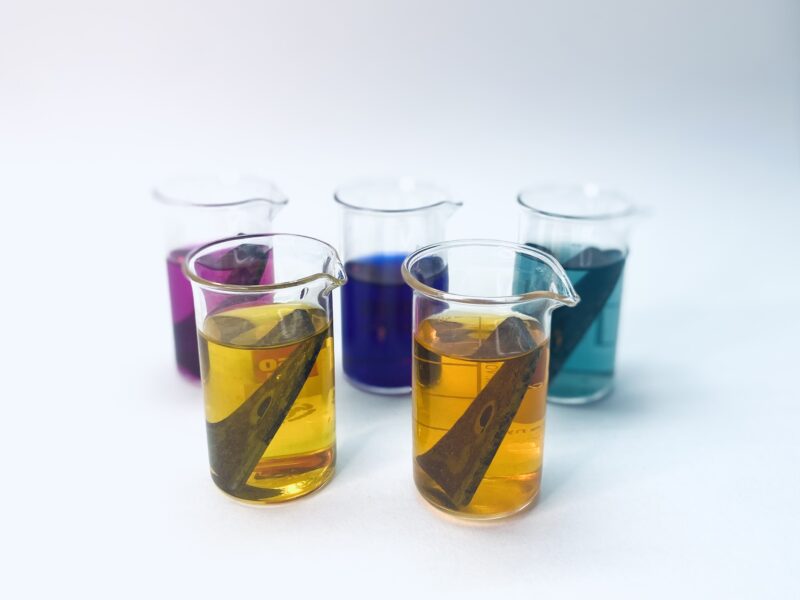
Viscosity, Density & Non Volatile Residue
Viscosity is a measure of how resistant a paint is to spreading or more commonly how “thick” a paint is. This is an important characteristic, because it determines how it performs when applied with different tools such as brushes, rollers, and sprayers. There are various ways of determining viscosity, most commonly used in the paint industry are:
- ASTM D4212 standard test method for viscosity by dip type viscosity cup.
- ISO 2431 determination of flow time by use of flow cups.
Density or weight per volume measurements of a paints or coating are important for batch-to-batch consistency and accuracy purposes. Part of quality control process, ensuring the final product has the correct amount of each material required in the coating formulation. Density helps confirm customers consistently achieve consistent, high-quality coatings and that those coatings perform as expected. Density is determined using a density cup, where a known volume of product can be weighed accurately. Common methods of determining paint density include:
- ASTM D1475
Non-volatile Residue (NVR) or non-volatile matter is the soluble, suspended or particulate material remaining following evaporation of the volatile solvent which contains the material. NVR determination involves evaporating the organic solvent followed by measuring the residue gravimetrically using a sensitive balance and carefully-tared weighing vessels. NVR tests in relation to paints determine if the theoretical or calculated percentage solid of the coating are within range and can be used as an appropriate means of determining dry film volume.
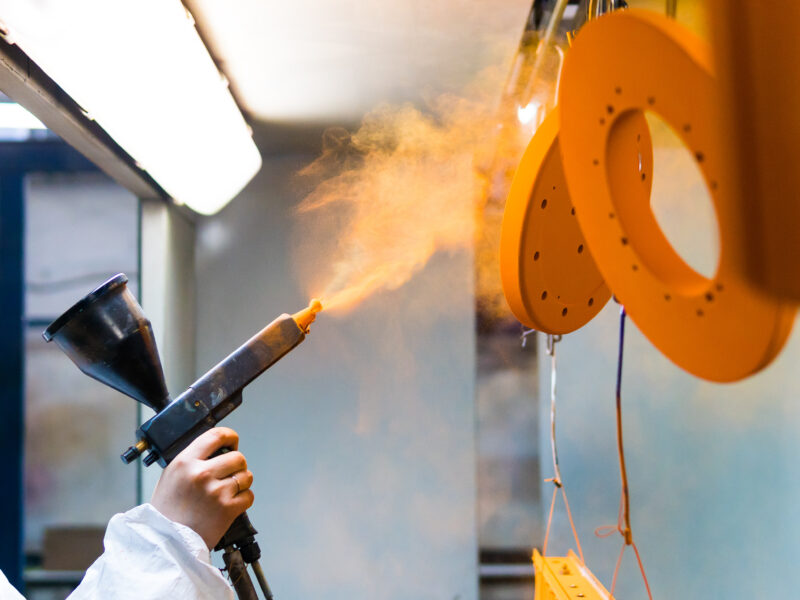
Colour & Gloss Testing
In order to prevent defects in production and to determine the defect causes and failures that may occur on the products, it is important to verify the characteristics of the coatings with regards to colour & gloss. It is important to measure the gloss & colour as the paint application progresses, this helps in early detection of wrong application and saves time and efforts.
Colour & gloss comparisons aid qualification of paint application. Where samples are evaluated against a known standard to ensure compliance. Evaluations can be via instrumental gloss / colour value determination or colour light booth comparisons.
Colour & gloss tests can be used to evaluate the degree of degradation of coating post exposure to environmental conditions such as UV or neutral fog. Please see environmental testing for more information on pre test conditioning.
Test Methods Include:
- ISO 2813- Paints and varnishes — Determination of gloss value at 20°, 60° and 85°
- ASTM D523- Standard Test Method for Specular Gloss.
- ISO 105-A02- test for colour fastness – grey scale for assessing change in colour.

Pencil Hardness Testing
A method of determining hardness of a single coating or paint system. Testing is conducted by pushing pencils of known hardness over a coatings surface at a constant angle with a known force and assessing its resistance to marking or deformation.
Pencil hardness tests are performed in order to asses performance of a paint or coating. Regardless of its primary function the coating or paint must have adequate performance capabilities for its intended purpose. Pencil hardness indicates a paint or coating ability to resist deformation.
Test Methods Include:
- BS EN ISO 15184
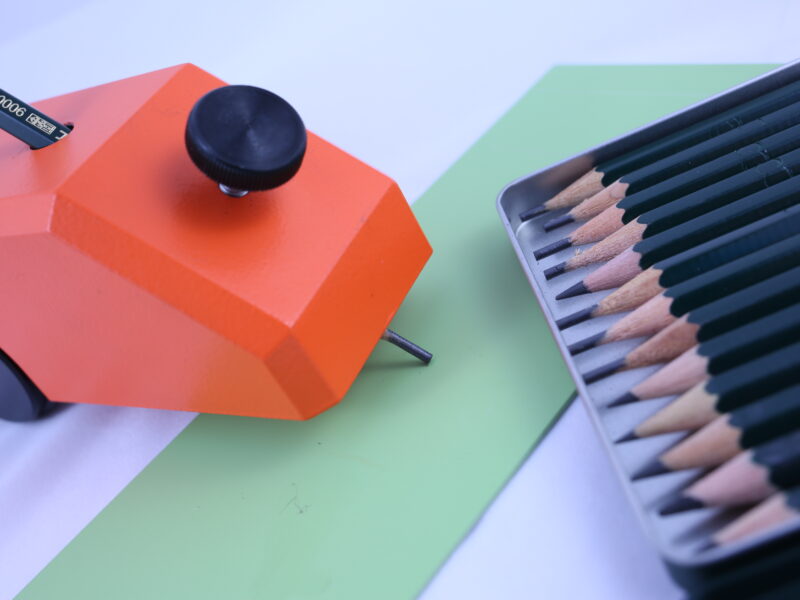
Scratch Testing
A test method for determining a paint or coating systems ability to resist penetration by scratching with a stylus loaded with a specified load. Similar to pencil hardness, scratch testing is conducted to asses performance of a paint or coating. However rather than the load staying the same & the hardness of the stylus changing, the stylus remains the same & the load can vary depending on requirements.
Results can be obtained for either pre-determined hardness value for which a pass/fail is given at a specified load or determination of scratch hardness, where the coating is tested to failure and a quantitative value reported.
- Test Methods Include:
- BS EN ISO 1518-1
- ISO 4586-2
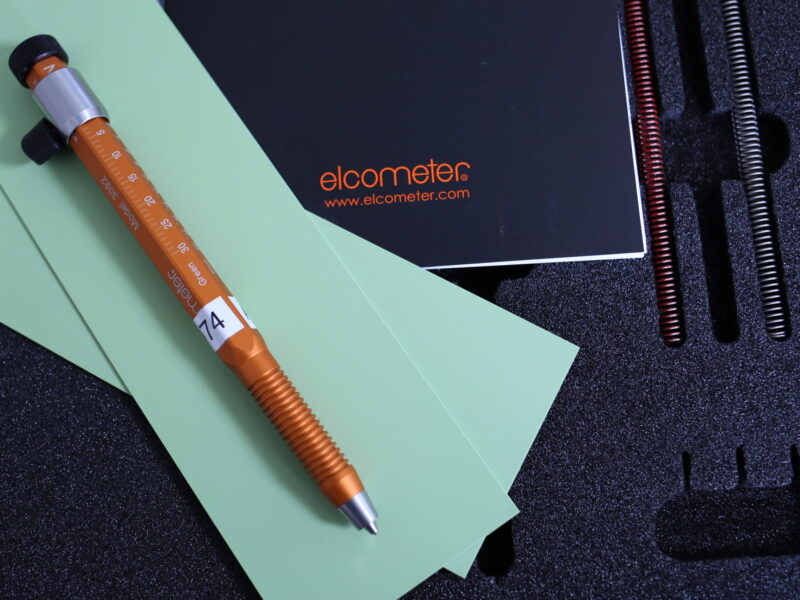
Thickness Testing
Coating thickness testing is carried out to ensure that the required depth of coating is applied for it to perform it’s function in service. Coating thickness measurements may be performed non destructively using an Eddy current meter or destructively, where a specimen can be cross sectioned and mounted for microscopic assessment.
Test Methods include:
- ASTM D 1186
- ISO 2178
- ISO 2808
Microsection thickness evaluations provide a visual of the coating system where individual layers can be measured. Micrographs can be incorporated into the laboratory report.
Photographic reports can be provided for optical microscopy methods such as intergranular attack where accurate scales and measurements can be added to enhance the micro-graphs. The software can be used to measure any visible elements within a micro-graph. for Example, indent depth, scratch depth, pitting, heat affected zone and alpha case.
